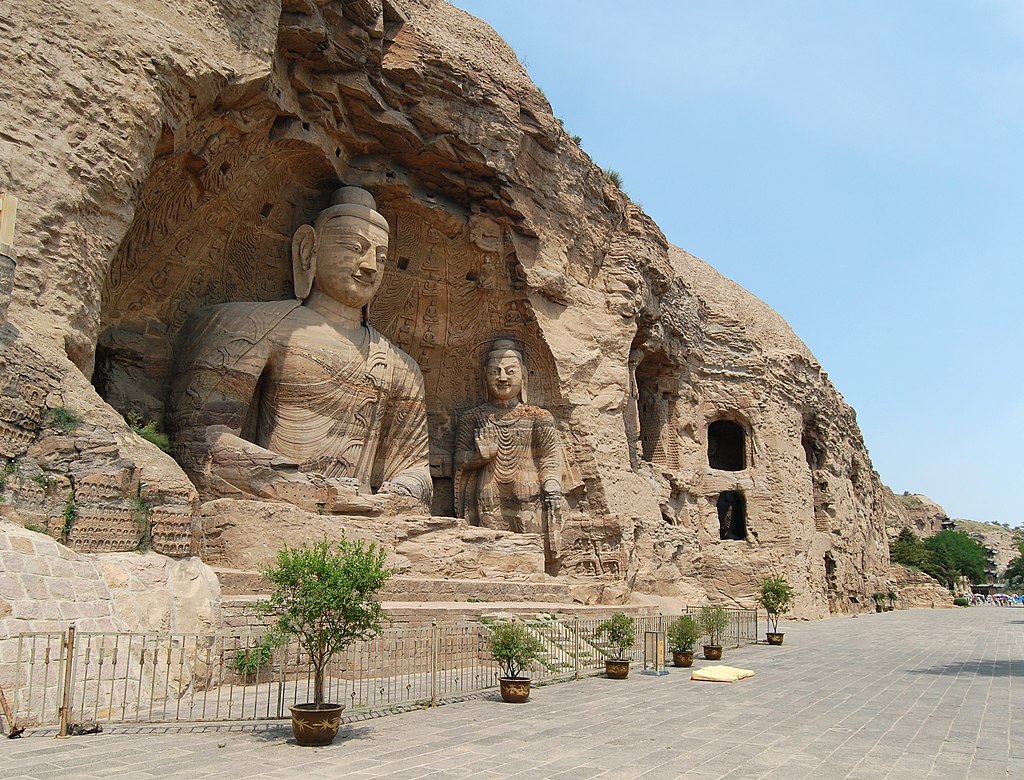The Yungang Grottoes, located near the city of Datong in Shanxi Province, China, stand as a testament to the artistic and cultural achievements of ancient China. Carved into the sandstone cliffs of the Wuzhou Mountain, these magnificent Buddhist cave temples represent one of the most significant examples of rock-cut architecture and Buddhist art in China, dating back over 1,500 years to the Northern Wei Dynasty (386-534 AD).

The Yungang Grottoes were commissioned by Emperor Xiaowen of the Northern Wei Dynasty as a demonstration of his devotion to Buddhism and his desire to establish Datong as a center of Buddhist culture and learning. Over a period of several decades, thousands of skilled artisans and laborers worked tirelessly to carve an astonishing array of statues, reliefs, and architectural elements into the cliffs, creating a vast complex of caves, niches, and chambers dedicated to Buddhist worship and meditation.

The grottoes at Yungang comprise over 250 caves and more than 51,000 statues, ranging in size from small votive figures to towering monumental sculptures. These sculptures depict a wide range of Buddhist deities, bodhisattvas, and celestial beings, as well as scenes from Buddhist scriptures and legends. The craftsmanship and artistry displayed in these sculptures are truly remarkable, with intricate details, expressive poses, and lifelike features that captivate the imagination and inspire awe in visitors.
One of the most iconic features of the Yungang Grottoes is the giant seated Buddha statue in Cave 20, known as the “Reclining Buddha,” which stands at an impressive height of over 17 meters (about 56 feet). Carved from a single piece of rock, this majestic figure exemplifies the grandeur and spiritual significance of the grottoes, serving as a focal point for pilgrims and worshippers from around the world.
In addition to its monumental sculptures, the Yungang Grottoes are adorned with intricately carved reliefs and decorative motifs, including lotus flowers, dragons, and celestial guardians. These ornamental elements enhance the beauty and symbolism of the grottoes, creating a harmonious blend of art, architecture, and religious symbolism.
The Yungang Grottoes are not only a masterpiece of Buddhist art but also a reflection of the multicultural influences that shaped ancient China. The grottoes incorporate elements of Indian, Central Asian, and Chinese artistic traditions, reflecting the diverse cultural exchanges that occurred along the ancient Silk Road trade routes. This cultural fusion is evident in the iconography, stylistic features, and religious symbolism found throughout the grottoes, illustrating the cosmopolitan nature of Buddhism and its profound impact on Chinese civilization.
Despite the passage of centuries and the ravages of time, the Yungang Grottoes have been remarkably well-preserved, thanks to ongoing conservation efforts and UNESCO recognition as a World Heritage Site. Today, the grottoes continue to attract visitors from around the world, drawn by their historical significance, architectural beauty, and spiritual resonance. As a living testament to the enduring legacy of Buddhist culture and artistic expression, the Yungang Grottoes serve as a source of inspiration and enlightenment for generations to come.



